What would happen if you launched a paper plane from the International Space Station?

Study on the dynamics of an origami space plane during Earth atmospheric entry - ScienceDirect
https://www.sciencedirect.com/science/article/pii/S0094576525004047
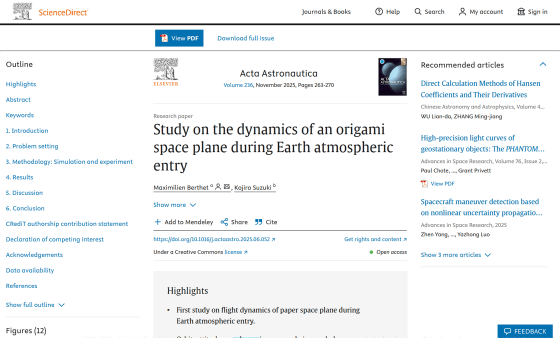
What if you Threw a Paper Airplane from the Space Station? - Universe Today
https://www.universetoday.com/articles/what-if-you-threw-a-paper-airplane-from-the-space-station
The paper published by the research team is titled 'Study on the dynamics of an origami space plane during Earth atmospheric entry.'
You might think, 'There is no gravity or air in space, so if I flew a paper airplane, it would just float on and on.' However, there is a small amount of air resistance in the low Earth orbit where the International Space Station flies, and the Earth's gravity is also at work, so the paper airplane will eventually re-enter the Earth's atmosphere.
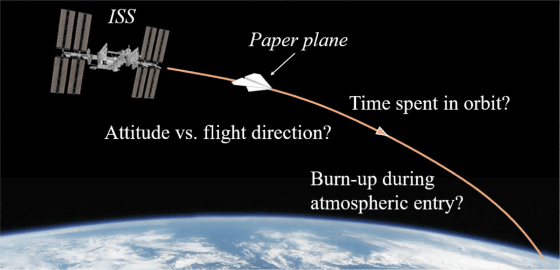
So the team folded a standard A4-sized sheet of printing paper into a paper airplane and simulated what would happen if it were launched from the International Space Station.

At first glance it looks like a normal paper plane, but it has been aerodynamically modeled to fly longer.
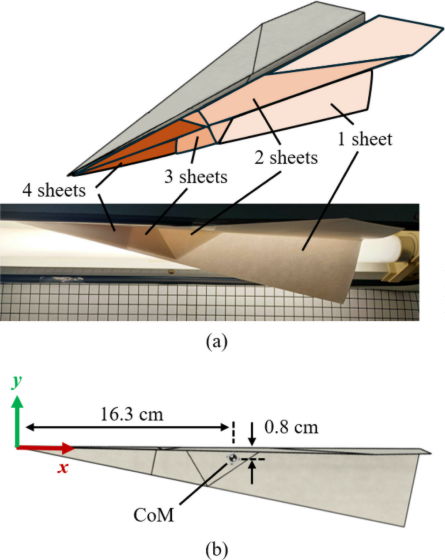
The team ran a CAD model of a paper airplane, flying it at the same altitude as the International Space Station, which orbits at an altitude of about 400 km, and at the same speed as the ISS, which is 7.8 km per second.
You might think that a paper airplane would shatter if it was flown at 7.8 km per second, but the density of the atmosphere in space at an altitude of 400 km is so low that the airplane would not be significantly damaged even if it was flown at this speed.
However, because the ballistic coefficient, a measure of an object's ability to overcome air resistance and continue flying, is low, the altitude of the paper plane drops rapidly. The research team's simulations show that the paper plane will drop from an altitude of about 400 km to about 120 km in about 3.5 days after being launched. In addition, at the point where it reaches an altitude of about 120 km, the air density increases, causing the paper plane to rotate and become uncontrollable.
The research team also conducted experiments using
Due to the size of the wind tunnel, the team used a one-third scale paper plane, made from regular A4 paper, which was attached to an aluminium tail and exposed to Mach 7 winds for around seven seconds, simulating atmospheric re-entry.
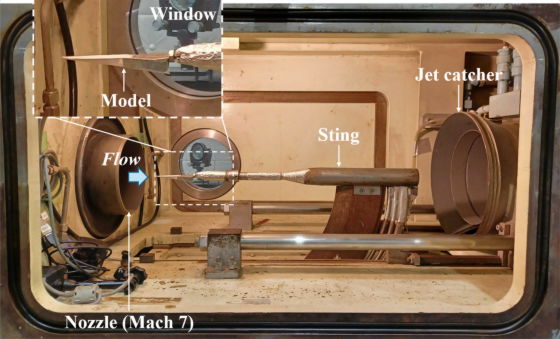
The plane managed to hold its shape for seven seconds, but the tip and wing edges showed signs of charring, suggesting that the plane would have burned out had the test lasted longer.
The photo below shows a paper airplane that actually withstood Mach 7 winds for 7 seconds. You can see that the tip is curled up and burnt.
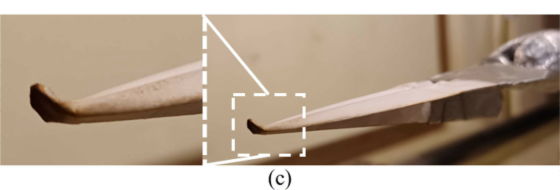
The results of this research not only satisfy intellectual curiosity, but may also be applicable to actual observation missions. Space-related media The Universe stated, 'Earth observation missions can also benefit from collecting data on a lightweight, stable platform that will burn up completely upon re-entry into the atmosphere at the end of its life.'
Related Posts:
in Science, Free Member, Posted by log1h_ik







